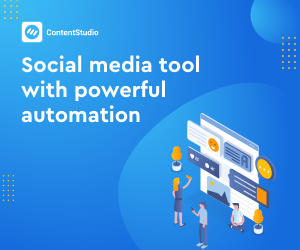General Advice
AI in SMEs: How to Prepare for the Future of Work?

Artificial intelligence is transforming the way different businesses operate, and that’s just the beginning of AI revolution. Many business owners are brainstorming whether there’s a place for AI in SMEs, and how it will shape the future of work and employment in those businesses.
Many people are concerned that with rapid AI development, roles and professions that are today crucial to businesses will become obsolete. That’s not without a reason because of the way AI is being promoted in media and the fact it can simplify so many daily tasks that’d normally take hours.
New AI tools emerge every day, from OpenAI’s ChatGPT and Google Bard to thousands of other AI-powered tools that can generate images, videos, summarize meetings, YouTube videos, and even write a research study.
According to research published by Jobbio, many people who are employed full-time are scared of the potential threat of AI for their jobs. According to data obtained for the research, around one-fifth of workers in The USA think that their jobs will no longer exist within the next ten years.
Instead of looking at it as a threat, small to medium enterprises should look for ways to implement AI in a way that can help them organize their workflow and improve productivity. Continue reading to learn how to use AI in SMEs to prepare for the future of work.
5 Ways to Use AI in SMEs to Prepare for the Future
As of 2022, there are 5.5 million SMEs in the UK, which makes up about 99.9% of the private sector, according to government data. Here’s how to leverage AI in SMEs and make better results.
Invest in AI Training
To use AI effectively the members of your organization will need to learn how to use it properly. You can do this through workshops, crash courses, bootcamps, and other forms of education. All SMEs should prioritize education and training within their workforce.
Developing AI literacy among your employees is the crucial step towards the effective use of AI in SMEs because it can help them identify where AI adds the most value to their work. This initiative can help foster innovation, identify AI use cases and cultivate a culture of continuous learning.
Maximize Workflow Automation
Many tools in the past allowed employees to automate their workflow, making it more effective. However, the integration of different AI tools available on the market can help maximize it. That said, AI in SMEs is quite important for automation.
According to research by Accenture, people will be able to focus on “exceptional work” which includes the non-routine tasks that generate more than 80% of value. In other words, the use of AI surpasses the traditional automation tools used in the past.
With the ability to automate even more tasks, even the non-routine ones, employees will be able to increase efficiency and focus on more strategic and creative endeavors.
Prioritize Data-driven Decision Making
AI is powered by data, and as such, it can help SMEs use it to make informed, data-driven decisions. But, to use business data as fuel for AI, businesses need to recognize the value in data and establish robust data management practices and policies.
SMEs can use data to get insights into customer behaviors and predict market trends as well as operational flaws and inefficiencies that maximize the loss and hold the company back from reaching its objectives. Using AI to identify potential security and privacy flaws can help establish firm security and privacy measures and adhere to data regulation.
That way, AI in SMEs can help build customer and stakeholder trust.
Invest in an Open AI Culture
SMEs shouldn’t see AI as a threat to job security but rather foster an open AI culture among teams and other employees.
It’s important to foster a culture where both humans and machines collaborate, making the job smoother, more effective, and more efficient. AI is designed to augment human performance and allow employees to work smarter while identifying weaknesses they can address to turn into strengths.
SMEs should encourage employees to explore the capabilities of AI and different AI-fueled solutions that can complement their work performance. AI in SMEs can lead to innovative and creative solutions as well as increased productivity which can be used for projects in the future.
Automate the HR
Have you ever heard of the term HAIR? It refers to automated human resources, leading to faster processing of large volumes of candidate data in efforts to find candidates that are more suitable for different positions.
It’s important to educate HR managers and the rest of the HR department on how to set an automated environment in a way that will allow them to analyze performance and other metrics regarding employment. HR managers will also need to analyze and explore ways to tell the AI performance apart from human work.
Conclusion
The AI revolution has started, and we’re yet to see the peak of AI in SMEs. One thing is for sure, SMEs will need to optimize AI in order to stay competitive in the market. The age of AI will bring even more SMEs forward that will know how to harness the power of AI to get on top of the industry.
By investing in AI education, training, and adaptability, and embracing automation SMEs will be more than prepared for the AI-driven future.










